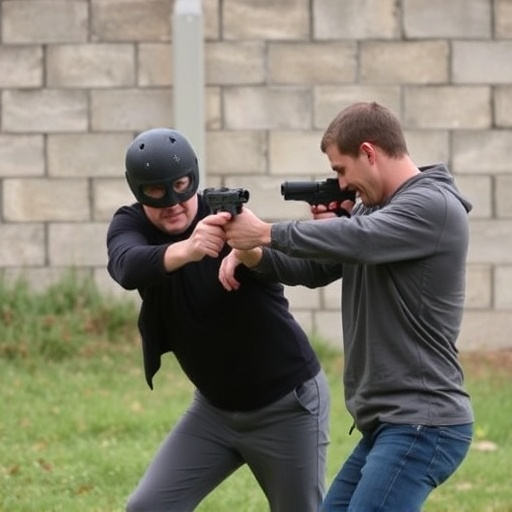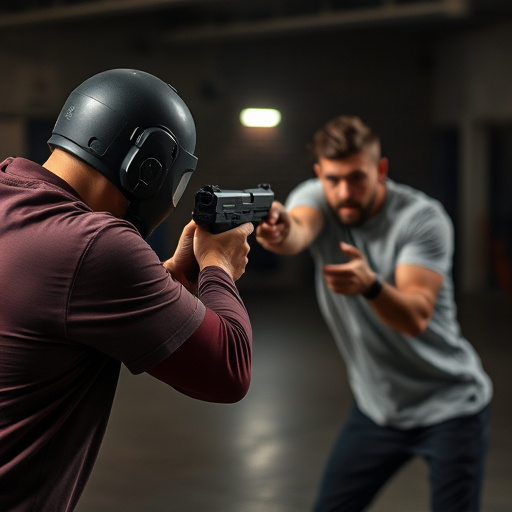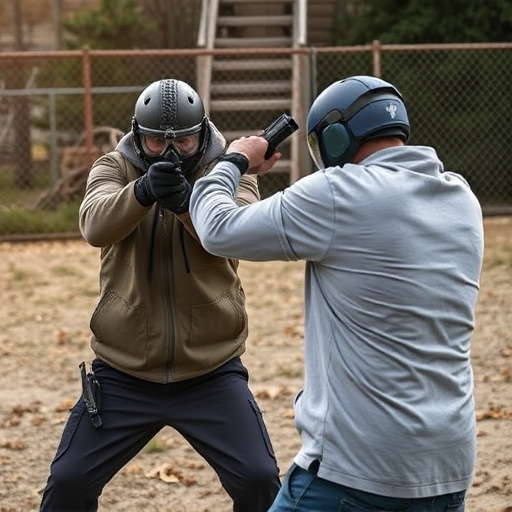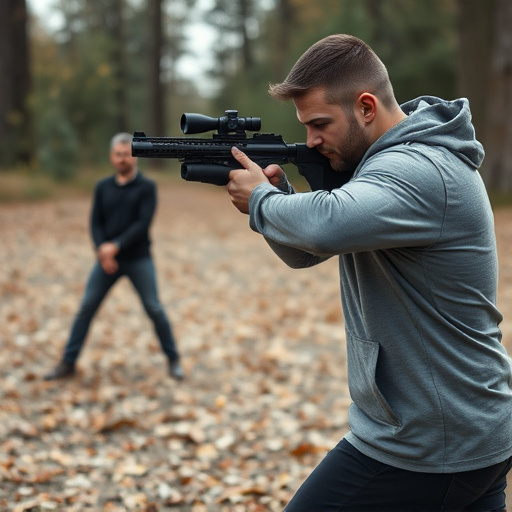- Understanding Rechargeable Stun Gun Batteries: Key Components and Safety Features
- Performance Metrics: Voltage, Current, and Capacity for Optimal Shock Effect
- Durability and Lifespan: Choosing a Battery That Meets Your Protection Needs
Understanding Rechargeable Stun Gun Batteries: Key Components and Safety Features

Rechargeable stun gun batteries are a vital component that enables users to stay prepared and ensures the device’s longevity. Understanding the key components and safety features of these batteries is crucial for anyone considering investing in a stun gun. The heart of a rechargeable stun gun battery is its cells, typically lithium-ion or nickel-metal hydride (NiMH). These cells store electrical energy, which is then discharged rapidly during use, delivering a powerful jolt to immobilize an assailant.
Safety features are the best in stun guns when it comes to these batteries. They include protection circuits that prevent overcharging, overs discharging, and short-circuiting, ensuring the battery’s longevity and reducing the risk of fire or explosion. Modern rechargeable stun gun batteries also incorporate temperature sensors, which stop the charging process if the battery gets too hot, a common issue with non-rechargeable alternatives. These safety measures are essential for users’ peace of mind, knowing that their stun gun is reliable and secure to operate.
Performance Metrics: Voltage, Current, and Capacity for Optimal Shock Effect

When evaluating the performance metrics of a rechargeable stun gun, understanding voltage, current, and capacity is key to ensuring optimal shock effect and best safety features. Voltage, measured in volts (V), represents the force behind the electric shock. A higher voltage typically delivers a more intense stun, but it’s crucial to balance this with safety to prevent excessive harm. Current, measured in amps (A), determines how much electrical charge is delivered through the device. Lower currents are often safer for users while still providing effective immobilization.
Capacity, usually expressed in milliamp-hours (mAh), refers to the battery’s stored energy. A higher capacity means longer use between charges, which is beneficial for self-defense situations that might require prolonged use. Balancing these three factors—voltage, current, and capacity—is essential for selecting a stun gun that offers both optimal shock effect and best safety features.
Durability and Lifespan: Choosing a Battery That Meets Your Protection Needs

When considering a stun gun, durability and lifespan of its battery are paramount, as they directly impact your safety and protection. Look for batteries designed with robust materials and advanced manufacturing processes to withstand rigorous use. High-quality batteries should be capable of enduring frequent discharges and recharges, ensuring reliable performance over an extended period.
Choosing a stun gun with a long-lasting battery is particularly important if you rely on it for personal safety or in emergency situations. The best safety features in stun guns include batteries that can deliver consistent power, ensuring your device is always ready when needed. Opting for durable and high-performance batteries will give you peace of mind, knowing your stun gun will function effectively when you need it most.
When selecting a rechargeable stun gun, prioritizing safety features and understanding battery specifications is key. The best models offer robust performance metrics, ensuring a powerful shock effect with voltage, current, and capacity optimized for effectiveness. Additionally, durability and lifespan are essential factors, as a long-lasting battery provides reliable protection when you need it most. By considering these aspects, you can choose the ideal stun gun that combines high-performance batteries with top safety features to suit your personal protection needs.
